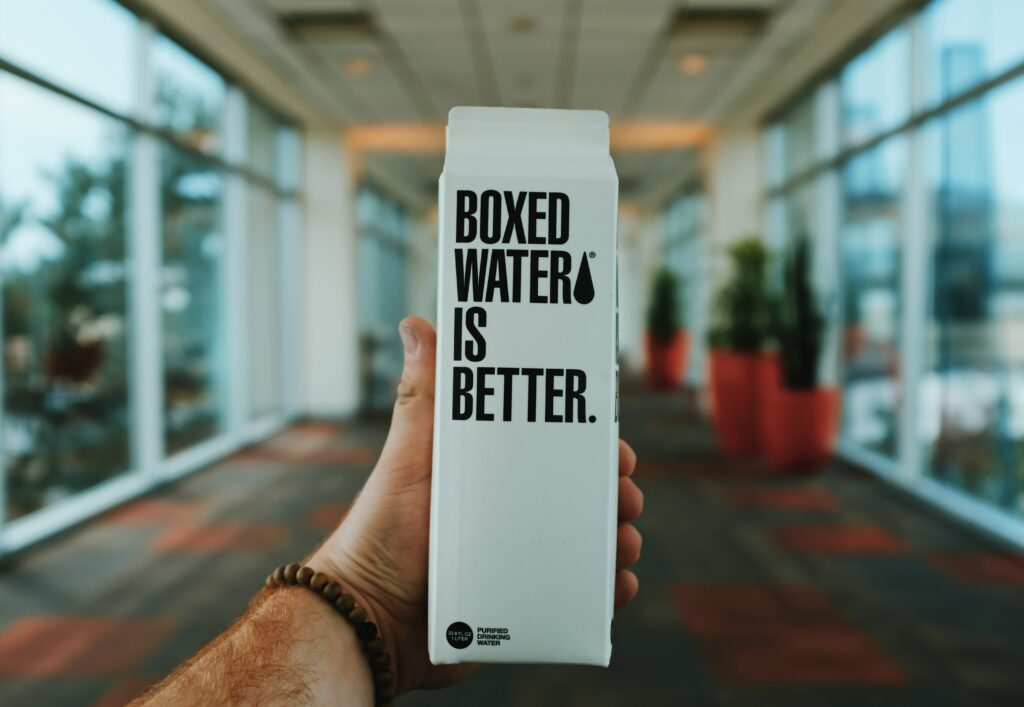SMS marketing offers brands an effective way to reach their customers with short, straightforward messages that aren’t a pain to read. Plus, because most people spend hours on their phones every day, you can expect a higher open rate, engagement rate, and conversion rate.
Ready to get started? In this article, we’ll cover everything there is to know about SMS marketing, from the fundamentals and best practices, to the right tools to utilize.
SMS marketing refers to the use of text messages to send promos, invites, alerts, and updates to customers. It’s a consent-based strategy, so recipients will have to explicitly give you permission (usually via opt-in forms) before you can send them specific types of messages.
Unlike other marketing methods, such as email marketing and automated chats, SMS marketing makes use of short messages and doesn’t require recipients to have an Internet connection. As long as they have a phone with a decent signal, they can receive your messages in an instant.
SMS short codes are five or six-digit numbers that businesses use to run SMS marketing campaigns. Compared to long codes (which are usually made up of 10 digits and can send only one message at a time), short codes are easier to remember and can send multiple messages per second. Short codes have a faster messaging speed, which comes in handy for time-sensitive offers and real-time announcements.
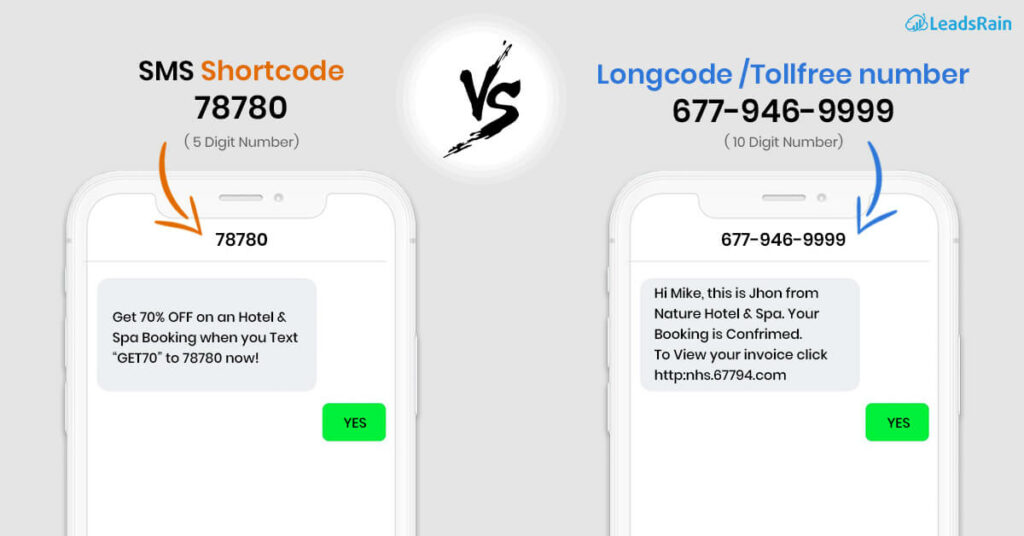
You can rent or purchase a short code at varying prices, depending on which type of code you opt for. You may choose between three types: shared, dedicated, and vanity short codes.
These are codes shared by multiple brands. They’re faster and cheaper to rent, but all the reply codes you use must be unique or aren’t already used by another user.
For example, if a brand invites their subscribers to reply with “Buy Now” for a campaign, you will no longer be allowed to use the same call to action. This ensures that all campaigns are mutually exclusive, and there’ll be no confusion on the part of the brands sharing a single contact number.
These codes can only be used by your business. They’re chosen at random by the Common Short Code Administration (CSCA) but are given to you exclusively. They’re more expensive than shared codes, so they’re usually only used by big brands like Amazon, Facebook, and Twitter.
These are dedicated short codes with numbers of your own choosing. You may choose a number combination that’s relevant to your brand name or that’s easy to remember. It’s the most expensive type but could be highly beneficial to brands with long-term SMS marketing plans.
Aside from the fact that SMS marketing doesn’t rely on an Internet connection to reach potential customers, this strategy also offers a number of other perks. Here are some:
More than four out of every ten people in the world have smartphones. Not only that, but the number of smartphone users consistently grows year after year. These figures reinforce mobile devices as a mass communication tool that you can take advantage of to reach more customers. Yes, people will still have to opt-in. But based on what many brands have experienced in the past, many people would be interested in receiving messages they find both valuable and useful.
In terms of word length and design, it’s easier to create content for SMS marketing than for email or chatbot marketing. You’ll usually only need a few lines and some optional emojis to finish a text message. Contrast that with emails that require one or more paragraphs, plus some graphics and special formatting to help with visual appeal.
SMS marketing is also relatively easy to learn. It can be even easier once you have an automation program or software that can expedite the process for you.
Short codes can send multiple messages per second. So, depending on how many subscribers you have, you can send out a message to all of them in a matter of seconds or minutes.
Also, it’s not just the sending process that’s quick. People can instantly open and read through your message since phone users generally often have their phones on or near them. A text message is just a quick read, unlike emails that people tend to leave unopened because they expect it to be lengthy.
SMS messages have an impressive open rate of 98%—almost five times higher than the usual open rate for emails. With this, it’s a no-brainer that you should try SMS marketing if you want more people to receive and read your promotional messages.
You can send a variety of messages to your subscribers via SMS. Here are some types that work well with eCommerce brands:
A welcome message should warmly usher your recipients into your community and explain what exactly they signed up for. It should include helpful information for first-time users, including the perks or freebies they have access to.
Ideally, your welcome message should also mention how often you’ll be sending them messages and how they can unsubscribe when they want to.
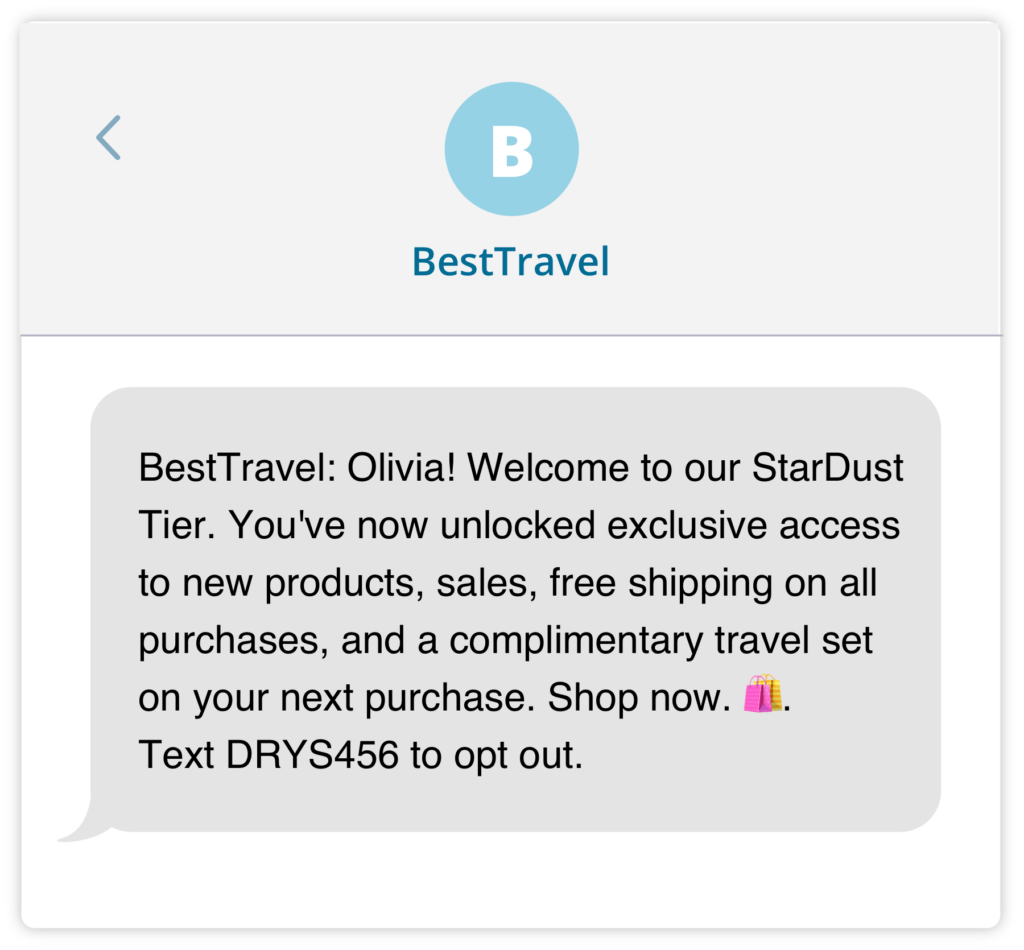
Time-sensitive promos include holiday sales, clearance sales, and any other type of promotion that runs only for a few days or even a few hours. These types of promos give customers a sense of urgency to make a purchase before stocks run out or before the sale period ends.
When sending an SMS about such events, your message should show the discount or promo details, the start and end date, and other information helpful to your customers.

Birthdays are special occasions that you can use to engage with customers in a personalized way. You can offer your subscribers a one-of-a-kind promotion, like a special discount or a freebie, that they can claim within a defined duration. Make sure to mention the validity period so that your customers will know when your offer expires.
If you aren’t already collecting your subscribers’ birthdates, you should start asking for that detail in your opt-in form.
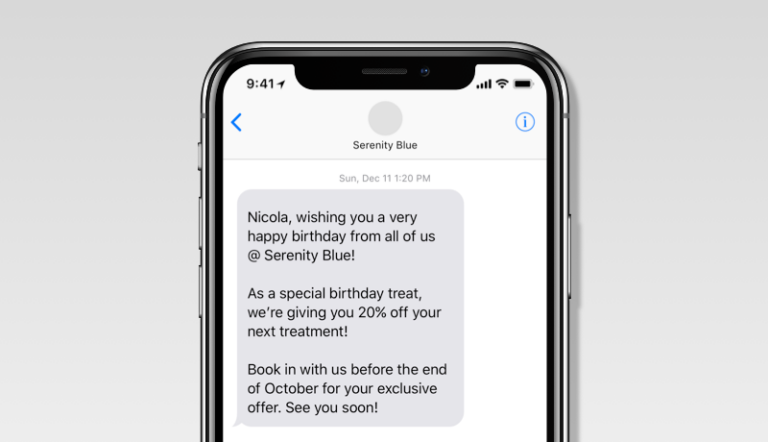
Abandoned carts are a highly common problem among eCommerce stores. And sometimes, a little reminder with an additional motivating factor—like free shipping or a discount voucher—is all it takes to nudge customers towards completing their purchase.
You can use SMS marketing to remind customers of the items left in their cart. Ideally, your reminder should include or show their pending orders, any special promo they can use, and a link to their cart that they can easily click on.

Post-purchase updates help customers monitor their order throughout its fulfillment journey. These messages typically include an order’s tracking number, plus a link to a website where they can input and check that number.
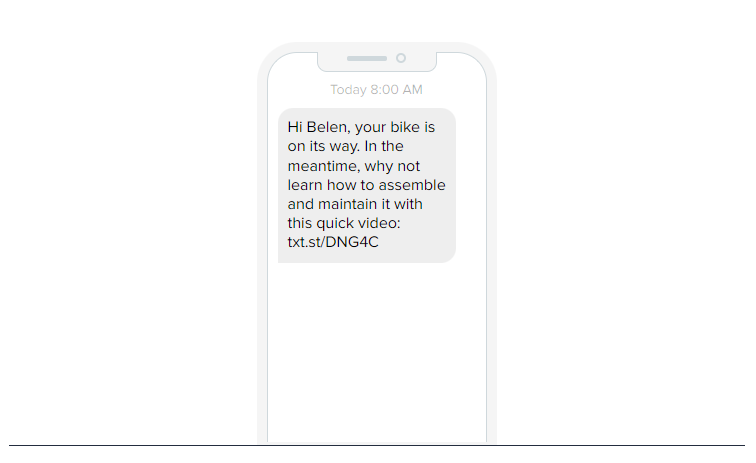
Aside from shipping notifications, post-purchase updates may also include important product information, product review reminders, and next-order coupons. You may also send a survey to gauge your customers’ satisfaction and the likelihood that they’ll recommend your store to their peers.

These messages inform customers when your previously out-of-stock items have been restocked. You can also use these messages as opportunities to promote available discount codes, vouchers, or even related items that may fit an upsell or cross-sell.
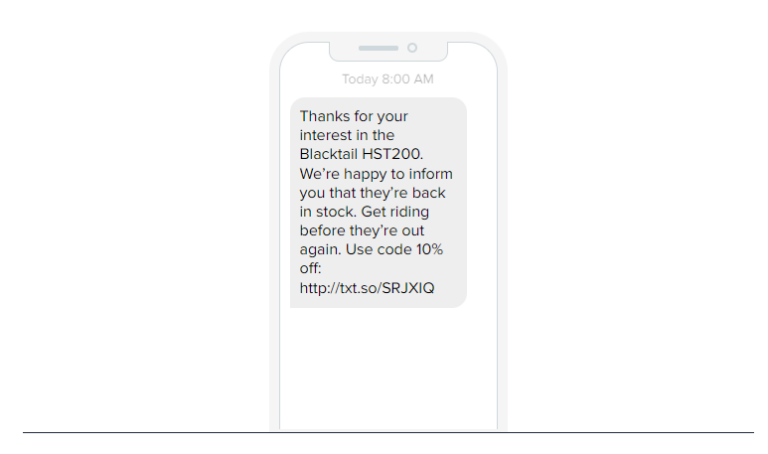
As with any other marketing strategy, SMS marketing has some tested and proven best practices that can set you up for success. Moreover, these practices will help you avoid legal issues, customer complaints, or a high opt-out rate.
SMS marketing must be permission-based. This means that you must not send messages to anyone without first getting their consent.
In the United States, the Telecommunications Consumer Protection Act or TCPA provides for the protection of consumers against any telemarketing practices done without their consent. There may be equivalent policies in other countries, so be sure to check those that apply to your target markets.
Additionally, you should pay close attention to the provisions of the CAN-SPAM Act (or any equivalent policy that covers your target locations), especially with regards to avoiding misleading information, providing opt-out instructions, and honoring opt-out requests promptly. Comply with these carefully, and they’ll surely keep you from any problems with the law.
Opt-in forms shouldn’t just ask people for their information. Instead, they should have enough details to inform your site visitors what they’re opting in for and what terms and conditions they’re agreeing to if they decide to proceed.
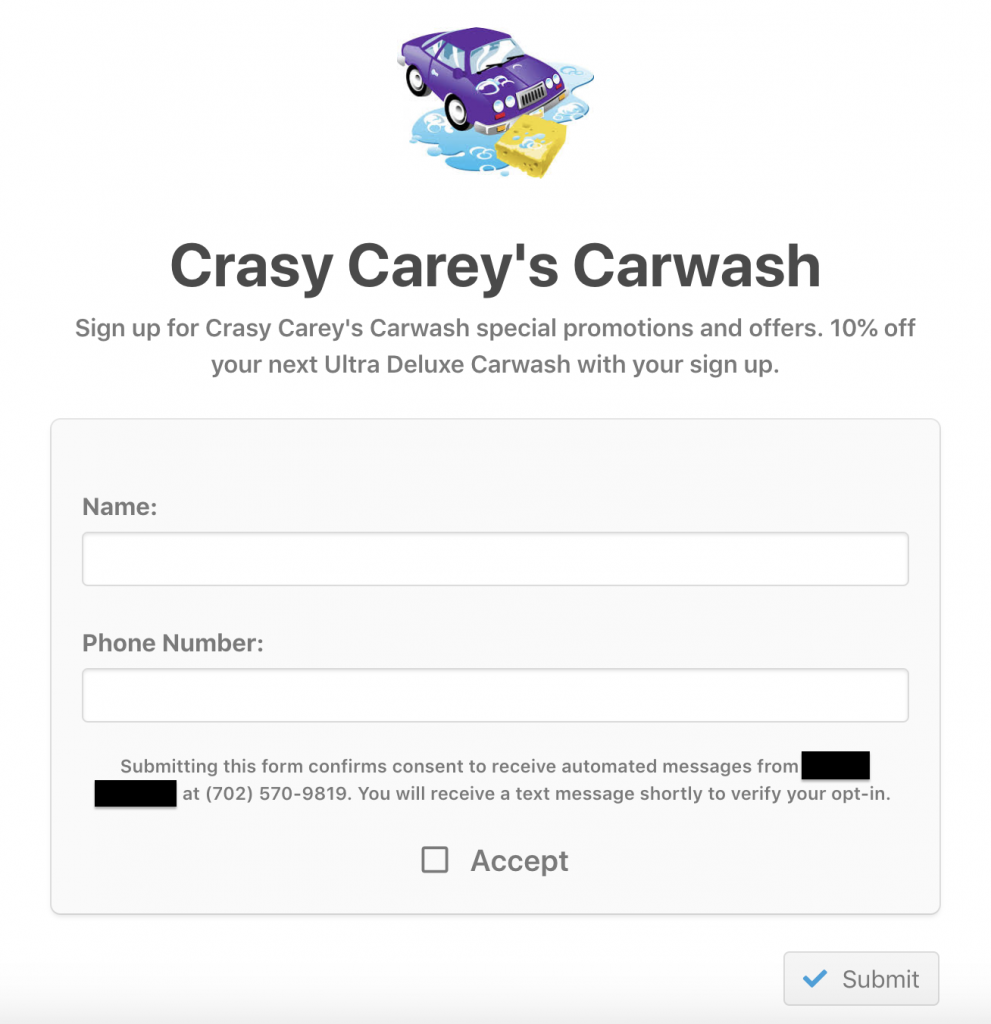
It’s also ideal to have a double opt-in—meaning your subscribers will have to verify their subscription immediately after they sign up. This helps ensure that they’re fully aware that they’re granting you their consent. Plus, having such a system creates a text messaging trail that you can use as proof of consent in case issues do arise.
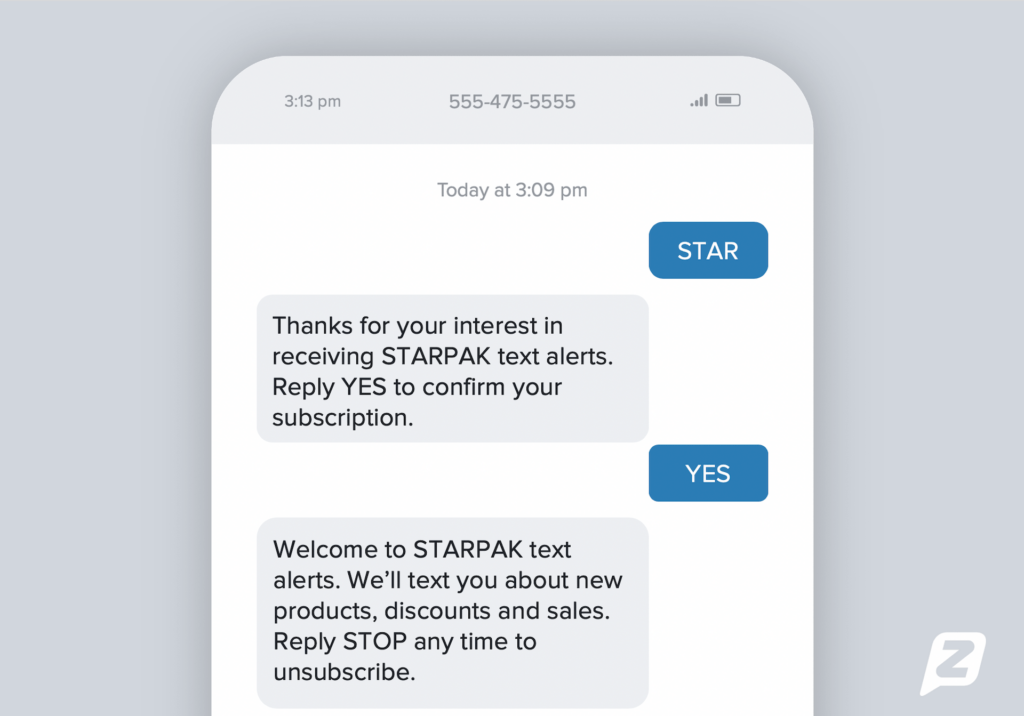
The average SMS maxes out at 160 characters, so make the most of this length by writing a message that’s straightforward, compelling, and has a strong call to action. Also, don’t forget the opt-out option required at the end of any marketing message.
Going straight to the point can add urgency to what you have to say, especially if it’s about a time-sensitive offer. If possible, personalize the message by mentioning the customer’s name or nickname.
As for the call to action, it should be compelling enough to guide your message recipient towards your desired decision. Here are some examples of good CTAs:
The quality of your SMS messages is just as important as the schedule and frequency of sending them. You wouldn’t want to keep texting your subscribers—that will appear spammy, and it could lead many to opt-out. At the same time, you wouldn’t want to be too lax as that could lead to lost sales.
Some marketers recommend sending texts to customers two to six times a month. However, there’s really no single correct answer here. Ultimately, you’ll need to see for yourself what works for your business and the offers or campaigns you have running.
The same goes for the ideal schedule for sending messages. You should research the trends relevant to your target markets and their locations. But generally, what many marketers believe is that Monday is the least popular among customers while Tuesday, Wednesday, and Thursday are the most favored.
Having the right software will make SMS marketing a lot easier for you. Among others, it should allow you to automatically personalize your messages (i.e., your subscriber’s name will appear on the message), schedule when they’ll be sent out, do bulk SMS marketing, and access reports on various SMS marketing metrics.
Most of the available SMS marketing services offer free trials that you can use. Once you’ve found a service that fits your needs, you can then consider whether you’ll purchase their paid package or not. Here are some SMS marketing platforms or services, open-source and paid, that you can check out:
The world may have advanced towards visually appealing emails and social media ads, but the marketing value of SMS is here to stay. The popularity of smartphones and the proven performance of text messages in terms of fast delivery and high open rate are facts that you can take advantage of.
So go ahead and craft your SMS marketing plan using all the tips and best practices in this guide. Test your plan and then optimize as you go. In no time, you’ll surely see some progress in your eCommerce business.

